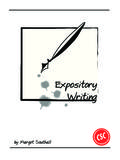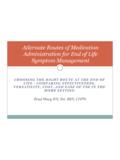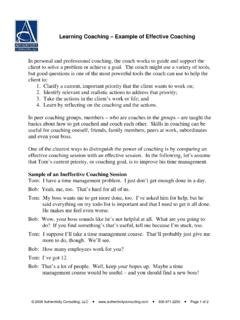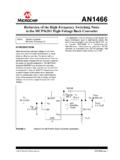Transcription of CHAPTER FIVE Strengths and Weaknesses of …
1 Horizon Research, Inc. 39 May 2003 CHAPTER five Strengths and Weaknesses of mathematics and Science Lessons Introduction As noted in the previous CHAPTER , the quality of the lessons teachers design and enact to help students learn mathematics /science content varies considerably. Researchers saw some terrific lessons classrooms where the students were fully and purposefully engaged in deepening their understanding of important mathematics and science concepts. Some of these lessons were traditional in nature, including lectures and worksheets; others were reform in nature, involving students in more open inquiries. Observers saw other lessons, some traditional and some reform-oriented, that were far lower in quality, where learning mathematics /science would have been difficult, if not impossible.
2 In an effort to determine which characteristics were most important in determining quality, the authors did an in-depth analysis of lesson descriptions for lessons judged very effective and decidedly ineffective. The factors that seem to distinguish effective lessons from ineffective ones are their ability to: Engage students with the mathematics /science content; Create an environment conducive to learning; Ensure access for all students; Use questioning to monitor and promote understanding; and Help students make sense of the mathematics /science content. These results are presented in the following sections, using excerpts from lesson descriptions to illustrate the findings. All quantitative data provided are weighted to represent all mathematics and science lessons in the United States, grades K 12.
3 Horizon Research, Inc. 40 May 2003 Engaging Students with mathematics /Science Content To be judged effective, lessons need to provide students with opportunities to grapple with important mathematics /science content in meaningful ways. Certainly one of the most important aspects of effective mathematics and science lessons, if not the most important, is that they address content that is both significant and worthwhile. Lessons using a multitude of innovative instructional strategies would not be productive unless they were implemented in the service of teaching students important content. Based on the lessons observed in this study, mathematics and science lessons in the United States are relatively strong in this area, with the majority of lessons including significant and worthwhile content.
4 (See Figure 11.) mathematics /Science ContentIs Significant and Worthwhile2922422502040608010012345 Percent of Lessons Figure 11 Although lessons generally include important content, most lessons are nevertheless low in overall quality. Clearly, while the inclusion of important content is necessary for high quality science/ mathematics lessons, it is not sufficient. Inviting the Learners into Purposeful Interaction with the mathematics / Science Content The hallmark of lessons judged to be effective is that they include meaningful experiences that engage students intellectually with mathematics and science content. These lessons make use of various strategies to interest and engage students and to build on their previous knowledge.
5 Effective lessons often provide multiple pathways that are likely to facilitate learning and include opportunities for sense-making. As can be seen in Figure 12, few lessons in the nation engage students intellectually with important mathematics /science content. Not at all To a great extent Horizon Research, Inc. 41 May 2003 Students Are Intellectually Engaged with Important Ideas Relevant to the Focus of the Lesson 20352514602040608010012345 Percent of Lessons Figure 12 Earlier we noted the importance of lessons being purposeful in relation to important learning goals, with teachers having a clear understanding of the purpose of each lesson in terms of those goals. We would argue, further, that students also need to see a purpose to the instruction, not necessarily the disciplinary learning goals the teacher has in mind, but some purpose that will motivate their engagement; lessons need to hook students by addressing something they have wondered about, or can be induced to wonder about, possibly but not necessarily in a real-world The observation protocol used in this study did not specifically ask researchers about the strategies that teachers used to engage students in the lesson, but observers often commented on the presence or absence of this feature in their lesson descriptions.
6 The following sections describe how lessons address, or fail to address, the need to engage students with the mathematics /science content. Many lessons do not include an element of motivation. Observers noted that many lessons just started. For example, a teacher began a 3rd grade lesson simply by having the students open their textbooks to the designated CHAPTER , while she handed them a review worksheet. Similarly, a high school lesson began with the teacher distributing a packet of questions and saying, All right now, these pages should be very easy if you ve been paying attention in class. We talked about all of this stuff. 6 A similar argument was made by Kesidou and Roseman (2002) in their analysis of middle school science programs, citing research support for the idea that if students are to derive the intended learning benefits from engaging in an activity, their interest in or recognition of the value of the activity needs to be motivated.
7 (p. 530) Not at all To a great extent Horizon Research, Inc. 42 May 2003 Just starting is not restricted to review lessons. For example, a high school teacher announced that, Today we re going to talk about Roman Numeral , referring to a lengthy outline he had given the students previously. In some cases students did not engage in lessons such as these; in other cases they were attentive, typically with an upcoming test rather than interest in the problem being posed as the apparent motivation. Some lessons motivate interest by engaging students with phenomena. Lessons that invite the learners in sometimes do so by engaging students in first-hand experiences with the concepts or phenomena. For example: In a 4th grade science lesson about the basic needs of animals and how different body parts help animals meet these needs, the teacher handed out a tail feather and a magnifying glass to each pair of students, and asked them to examine the feather, pull the barbs apart, and look for the hooks.
8 They then pulled the feather between their fingers, making the barbs stick back together. The teacher then handed out a down feather and they repeated their investigations. H I In a lesson on fractions and as an introduction to percents, the teacher in a 7th grade mathematics class asked three students to come to the front of the class for a demonstration. One student measured the height and arm spread of a second student, while the third student wrote the numbers on the board. The students used these numbers to express the relationships both as a ratio and as a percent. H I A high school physics teacher had the students explore static electricity using a Van de Graaf generator, Tesla coil, and fluorescent light tube.
9 The teacher explained how each worked, and used students to demonstrate what happens when electrons are pulled from one source to another. Other lessons use real-world examples to generate interest. Some teachers, instead of providing students with first-hand experience, invite the students in by using real-world examples to vividly illustrate the concept. The following lesson descriptions illustrate lessons where real-world examples played a large role in student engagement: As a lesson on the skeletal system started, a life size skeleton, named Mr. Bones, was introduced to the 5th grade class. The teacher talked about specific bones of the body, frequently capturing students attention by telling stories and personal experiences: her husband s broken collar bone, actor Christopher Reeves spinal cord injury, and her father s arthritis; students shared similar stories about the mailman with carpal tunnel syndrome and a mom with TMJ.
10 H I The teacher asked students in a 6th grade science class to name different kinds of rocks, based on size, then explained that the Earth s crust is made up of many different-sized rocks. She asked: Who s been to [a nearby city park]? What s at the bottom of the stream? Have you ever felt squishy stuff between your toes? That s sediment. Students then raised their hands and described their family vacations to different locations with interesting rock formations, and described how the bottom of various lakes felt to them. H I A 7th grade mathematics lesson used examples from architecture, carpentry, and dressmaking to help Horizon Research, Inc. 43 May 2003 students understand the concept of symmetry; students were invited to provide their own examples as well.








